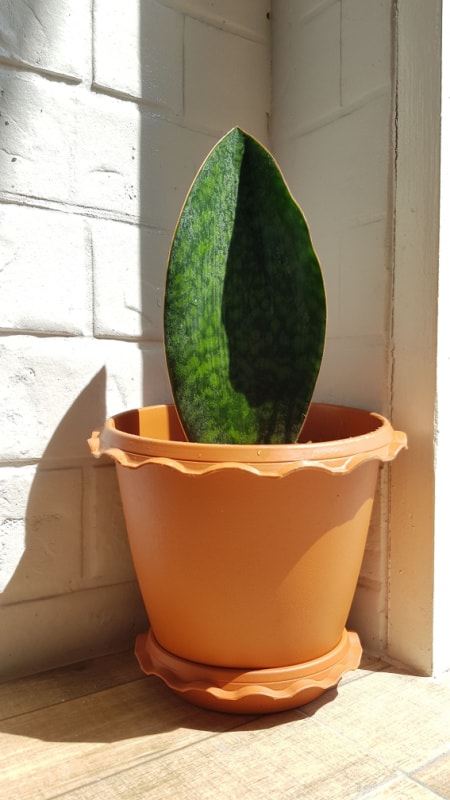Indoor plants bring a touch of nature into our homes, purifying the air and creating a calming environment.
However, even the hardiest of these plants can sometimes struggle, especially when exposed to unfavorable conditions.
Take, for instance, a Whale fin Sansevieria, a popular houseplant known for its broad, mottled green leaves that resemble a whale's fin.

If this particular plant had been left in the sun for too long, it would start to show signs of distress, such as brown spots and yellowing, dying foliage.
But don't worry, even a struggling plant can be nursed back to health with the right care and attention.
Inspired by the TikTok video from Planterina, this guide provides a step-by-step method to help such a plant recover and thrive.
@planterina Snake Plant Rehab! #whalefinsansevieria #plantlove #savingplant #plants #planterina ♬ original sound - Planterina
The following simplifies the process, making it easy for anyone, even those new to plant care, to follow along and breathe new life into their Whale Fin Sansevieria.
1. Identify the Problem
Observe the plant carefully. If you notice brown spots and yellowing, dying foliage, it's a sign that the plant has been exposed to excessive sunlight.
Understanding the problem is the first step towards finding a solution.
2. Spot the Hope
Amidst the dying plant, look for signs of life. In this case, a baby plant that is still healthy and vibrant.
This baby plant holds the potential for the future growth and survival of your Whalefin Sansevieria.
3. Inspect the Roots
The health of a plant is deeply rooted, literally. Carefully remove the soil from around the roots to check their condition.
Healthy roots are a good sign that the plant can be revived.
4. Remove the Dying Foliage
Cut away the dying leaves. This might seem counterproductive, but it's a necessary step.
Removing the dying parts allows the plant to focus its energy on new growth and recovery.
5. Consider Propagation
As you remove the dying foliage, consider the possibility of propagation.
Even if the foliage is dying, it might still have the potential to create new plants.
6. Focus on the Baby Plant
Now, shift your attention back to the baby plant. This little one is the future of your Whale Fin Sansevieria.
It's time to give it the care and attention it needs to grow and thrive.
7. Clean the Roots
It's bath time for the baby plant. Gently rinse the roots to remove any residual soil or potential pathogens.
This step ensures the baby plant has a clean, healthy start in its new soil.
8. Replant in Fresh Soil
After the bath, place the baby plant in fresh, well-draining soil.
The soil should be rich in nutrients and have good drainage to prevent root rot, a common problem for Sansevieria plants.
9. Nurture and Grow
With the baby plant in its new home, it's time for the most rewarding part of the process.
With time, patience, and proper care, you'll watch the baby plant grow, produce its own babies, and eventually fill the pot with beautiful Whale Fin Sansevieria.
The Rewarding Journey of Plant Revival
Reviving a plant requires patience and care. It's a process that deepens our connection with nature and underscores our role as caretakers.
Seeing a struggling plant like the Whale Fin Sansevieria recover and thrive is a testament to the resilience of nature.
This journey not only brings a plant back to life but also fosters growth in us as plant parents. It's a rewarding experience well worth the effort.
To learn more about this kind of plant, read the articles below.
